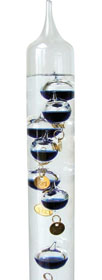

In the process manufacturing industries, good process control depends on accurate and reliable field devices. Advancements in the industry have helped improve the quality and reliability of these devices and hence the quality of control over the processes.
For example, modern microprocessor-based temperature transmitters offer both highly accurate digital measurement output and bi-directional communications – including device diagnostics – between the field device and the control or asset management system. This remote access to field device diagnostics supports today’s increasingly important plant asset management (PAM) strategies, a key driver that led many suppliers to make renewed investments in their otherwise neglected temperature product lines.
The market faces headwinds
While the temperature transmitter market suffered huge setbacks during the great recession that started in 2008, ARC Advisory Group saw the temperature market pick up again in 2011. This was mainly due to increased orders from the growing oil and gas, chemical and electric power industries. Though the global economy is gradually recovering, most industrial enterprises continue to move with caution and tightly control their spending. This drives many end-users to ignore the potential long-term benefits and cost-saving that come with using temperature transmitters and, instead, choose to direct-wire their RTD or thermocouple temperature sensors for applications where they believe they can accept compromised accuracy.
The risk-averse and price sensitive nature of today’s end-users offers little incentive for suppliers to make research and development in this area, inhibiting innovation.
ARC believes that this lack of innovation in basic field devices will hurt suppliers and end-users alike over the long run.
In the process industries, temperature, flow, level and pressure are the four most important measurement and control loops. Wise selection of the associated field devices is crucial for measuring and controlling these four loops. While previous advancements in the process control industry helped improve the quality and reliability of field devices, other than the general movement toward wireless measurements, ARC has not seen significant innovation in basic measurement technology in recent years.
In the past, because of the relatively small size of the temperature market, few diversified suppliers invested in their temperature transmitter product line, opting instead to focus limited resources into more lucrative lines of business such as flowmeters and plant asset management solutions. Now, suppliers have begun to invest in their temperature product lines again, given their importance to plant asset management initiatives.
Market recovery is price sensitive
ARC’s latest temperature transmitter market study indicates that the transmitter market is recovering from the economic downturn. This rebound in temperature transmitter shipments is mainly due to increased orders from the growing oil and gas, chemical, and electric power industries. EMEA and North America, the largest and second largest market for temperature transmitters, respectively, have not recovered fully from the recession. Asia remained the strongest throughout the recession. New plant construction in Asia, especially China and India continue to drive supplier revenues. ARC also expects industries in other Asian countries such as Indonesia, Malaysia, and South Korea, to expand and thus contribute to the high demand for transmitters from the region.
Users of temperature transmitters demand more functionality for less money. Unlike other field measurement technologies, temperature transmitter innovation has been severely limited by its relatively small market size and low average selling price.
Without new drivers to expand the market, suppliers are pressured to reduce cost while embedding affordable features in an attempt to differentiate their products. The severe competition among suppliers gives end-users the upper hand in price negotiations. With the ongoing slowdown in the global economy, ARC expects prices to decline in the near future as well.
End-user’s interest in better solutions has direct impact on the innovation activity in any industry. However, price sensitive end-users and purchasing agents may not be willing to pay the higher costs typically associated with this innovation. This appears to be the current situation in the temperature transmitter market.
End-users are selective
Furthermore, unlike consumer electronics and many other consumer industries, industrial end-users tend to be very conservative. While the consumer electronics industry enjoys large numbers of early adopters who are willing to take risk on an unproven innovation because they want to be among the first few to get their hands on the latest technology, this clearly is not the case when it comes to industrial field devices. Here, the ‘consumers’ tend to be extremely cautious and risk averse and prefer to adopt solutions that are fully tested, field-proven and reliable. Adopting a new solution in this industry usually involves a large-scale implementation that is both expensive and time consuming. Depending on the scale, a plant may face downtime for long hours during the upgrade process and plant engineers and workers may require hours of training to operate the new technology.
Industrial purchasing decisions themselves also tend to be very complicated. Multiple decision-makers at different management levels are involved. Convincing all these decision-makers, especially in these tough economic times, can pose a big challenge. These decision-makers want to make well informed decisions and need well documented examples of success in similar applications to be confident of the new technology.
In a price-sensitive industry with a small pool of early adopters and slow adoption rate, suppliers have little incentive to dedicate resources to research and development, thus hampering innovation.
For more information contact Paul Miller, ARC Advisory Group, +1 781 471 1126, [email protected], www.arcweb.com

© Technews Publishing (Pty) Ltd | All Rights Reserved